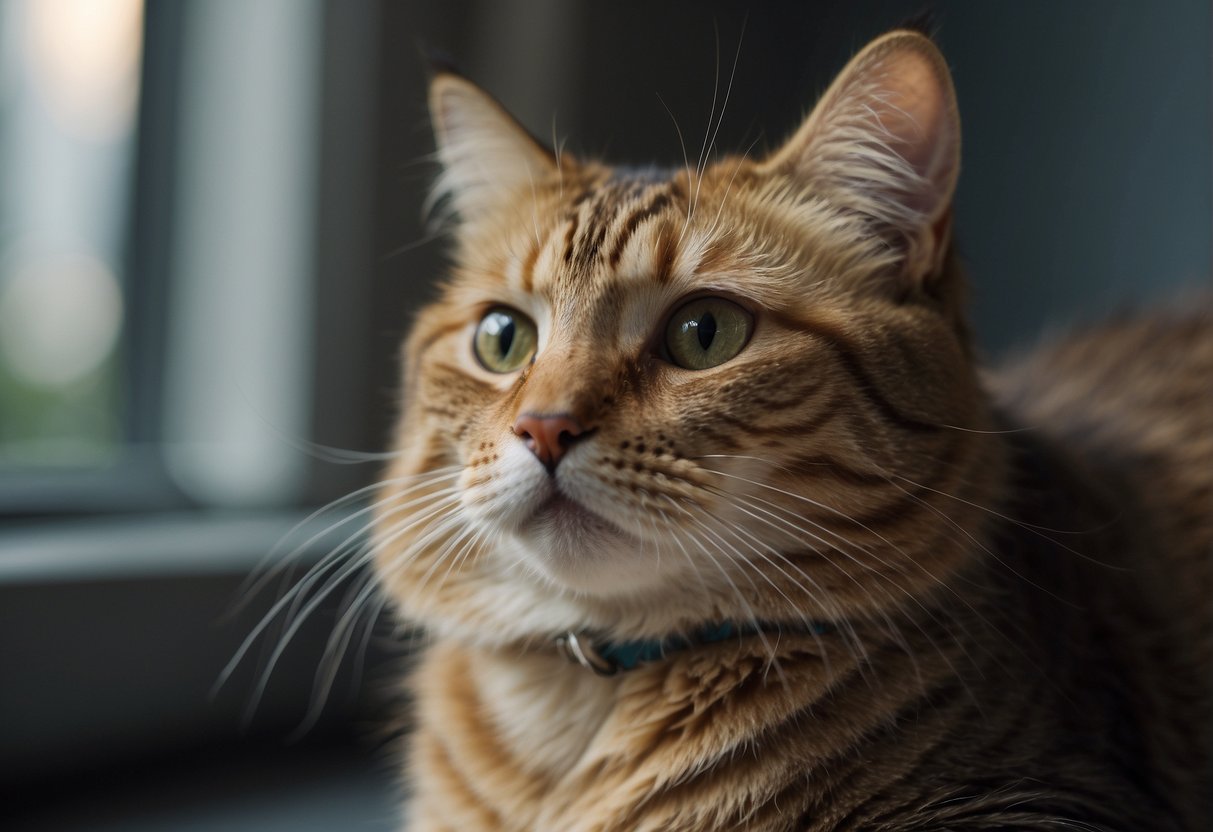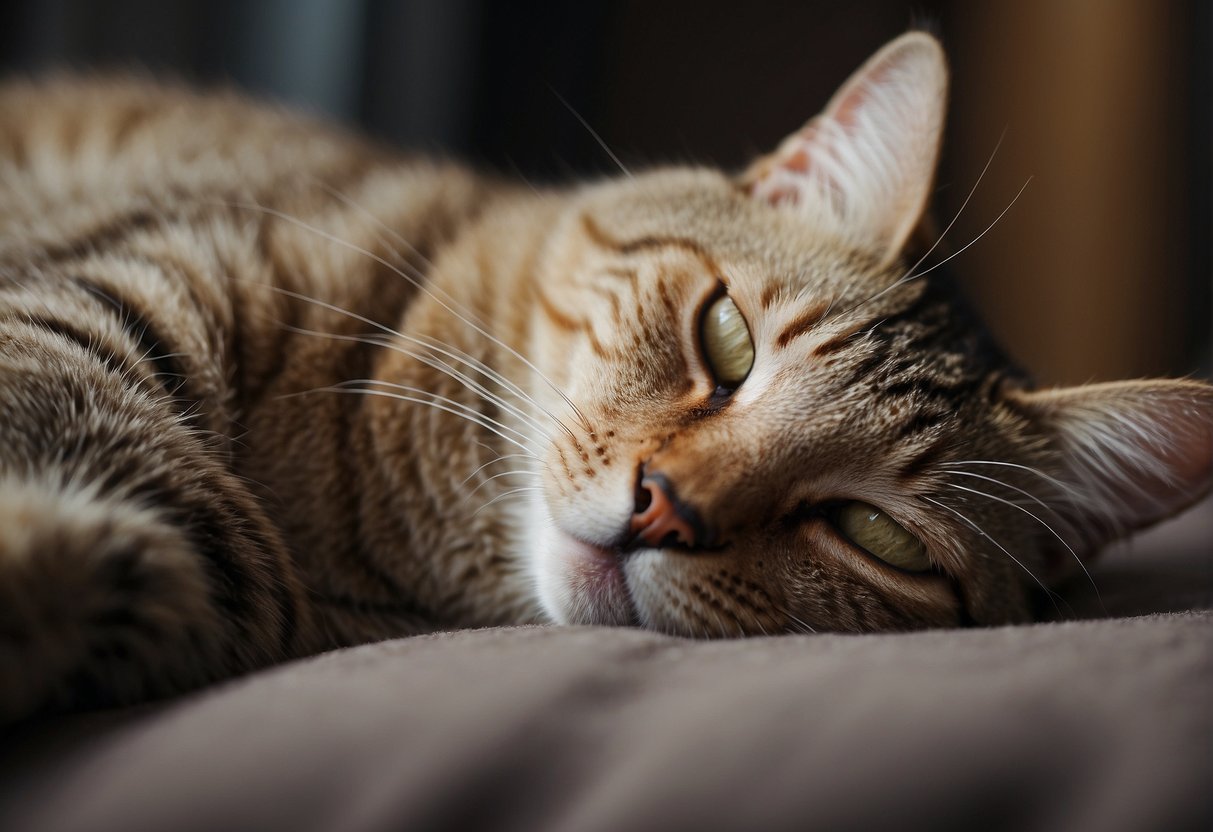The time it takes for anesthesia to wear off in cats can vary, often ranging from a few hours to a full day post-procedure. Based on personal experience, after a routine dental cleaning—which is fairly common for our feline companions—the effects of anesthesia started subsiding within just a couple of hours, showing initial signs of alertness.
By the evening, coordination was still a bit wobbly, but there was noticeable improvement.

Understanding the recovery process is essential, especially since each cat reacts differently to anesthesia.
After a more extensive operation, like a spay or neuter surgery, it took a full night’s rest for my cat to start bouncing back to their usual self. It’s important to be patient and provide a quiet, comfortable space for your cat to recuperate.
Your vet will give you a rundown on what to expect post-anesthesia, and it’s crucial to follow their guidance.
Understanding Anesthesia in Cats
When your cat undergoes a procedure, understanding anesthesia is crucial for their safety and comfort. Knowing the types used helps you know what to expect during your furry friend’s recovery.
Types of Anesthesia
Anesthesia is a critical tool for ensuring your cat doesn’t feel pain during medical procedures. There are two main types of anesthesia used in feline medicine: general anesthesia and local anesthesia.
- General Anesthesia: This type renders your cat unconscious, providing a pain-free experience during surgery or other invasive procedures. Drugs like propofol, isoflurane, sevoflurane, and alfaxalone are common induction agents that help initiate this state quickly and safely. Inhalant anesthetics may be used to maintain it.
- Local Anesthesia: For less invasive procedures, your cat may receive local anesthesia, which numbs a specific area of the body without affecting consciousness.
- Sedation: In some cases, full anesthesia isn’t necessary. Instead, your cat might be given sedatives, such as diazepam or ketamine, to relax or mildly sedate them. It’s less intense than general anesthesia and used for minor procedures or to calm your cat for diagnostics.

Pre-Anesthesia Assessment and Preparation
Before your furry friend goes under anesthesia, it’s crucial to thoroughly prepare in order to ensure their safety and well-being. The process involves a detailed medical history review, physical examination, and diagnostic tests to assess their health status.
Medical History Review
Medical History: It’s vital to provide your vet with a complete medical history of your cat. Discuss any previous reactions to anesthesia, chronic conditions, and current medications. Ensure you mention even the small details, like if your cat is sneezing more than usual, as they could be significant.
- Medication: List all medications, including doses and the schedule your cat is on. It’s essential to know which ones to continue or halt prior to the procedure.
- Fasting: Your vet will likely advise fasting your cat before anesthesia to prevent possible complications during the process.
Physical Examination
Physical Examination: A thorough physical evaluation will be performed to check for any abnormalities that may complicate anesthesia.
- Blood Pressure & Heart Rate: Measuring blood pressure and heart rate helps in assessing the cardiovascular status of your cat.
- Electrocardiogram (EKG): An EKG can be conducted, especially for older cats or those with a history of heart disease, to detect any rhythm abnormalities.
Diagnostic Testing
Diagnostic Testing: Pre-anesthetic tests vary based on the cat’s age, breed, and health status but often include:
- Blood Tests: A Complete Blood Count (CBC) and serum biochemistry profile provide invaluable information about the functioning of organs and the presence of infections or anemia.
- Radiographic Examination: In some cases, x-rays might be recommended to scrutinize your cat’s internal state for any issues that might not be evident from the outside.
Anesthesia Procedures and Monitoring
When your cat undergoes an operation, the induction and maintenance of anesthesia are critical phases, with close monitoring paramount to ensure safety and a smooth recovery.
Induction and Maintenance
Inducing anesthesia in your cat typically involves administering drugs to initiate a sleep-like state. It’s a delicate balance: your vet will use just enough to ensure unconsciousness without stress.
Maintenance is about keeping your cat safely under throughout the procedure, with a combination of inhaled anesthetics and an endotracheal tube to secure an open airway. This tube also helps deliver a mixture of oxygen and anesthetic gases, keeping everything steady during the surgery.
Monitoring Vital Signs
Monitoring vital signs is crucial for your cat’s safety during surgery. Advanced equipment helps veterinary professionals keep a vigilant eye on:
- Heart Rate Monitor & ECG (Electrocardiogram): They track the electrical activity of the heart, confirming that everything’s ticking as expected.
- Pulse Oximetry: This little clip on your cat’s ear or paw measures how well oxygen is circulating in the blood — a crucial indicator of wellbeing.
- Blood Pressure Monitor: Essential to ensure blood is flowing effectively to all the vital organs.
- Core Body Temperature: Keeping your cat warm and at a stable temperature is pivotal, as anesthesia can cause the body temperature to drop.
- Carbon Dioxide Levels and Respiratory Rate: Monitoring outgoing breath helps assess how well your cat is breathing and can alert the team to any respiratory issues.
Recovery and Post-Anesthesia Care
When your cat awakens from anesthesia, it’s a time that requires patience and attentive care to ensure they recover smoothly and comfortably. Let’s talk about what happens right after the surgery and how you can monitor your furry friend during this critical phase.
Waking Up from Anesthesia
As your cat starts to emerge from the grip of anesthesia, you’ll notice they may seem disoriented or groggy. This is normal, as the sedatives employed during surgery take time to metabolize.
Cats generally begin to regain consciousness within a few hours post-surgery, but full alertness may take slightly longer, depending on the type, dose of anesthesia, and their medical conditions.
Key Aspects to Ensure Comfort and Safety:
- Keep them in a quiet and safe space to prevent injury as they regain their senses.
- Monitor closely for any signs of anesthetic complications such as difficulty breathing, excessive grogginess, or changes in behavior.
- Offer a cozy bed and ensure they remain warm, as body temperature can drop under anesthesia.
Postoperative Monitoring
After your cat wakes up, diligent monitoring is crucial to detect and address any complications early. Monitor their recovery progress, ensuring they have a comfortable space to rest, away from loud noises or high-traffic areas.
Post-Surgery Monitoring Checklist:
- Respiration: Ensure breathing is regular and unlabored.
- Hydration: Look for signs of dehydration; some cats may need intravenous fluids post-op.
- Pain Control: Watch for signs of discomfort. Your vet may prescribe pain medication to help manage any discomfort.

My name is James, and welcome to FAQCats!
Along with our team of cat owners, expert pet enthusiasts, and pet professionals, we aim to write engaging helpful, engaging content about cats. At FAQCats we strive to provide content that’s accurate and fun to read. Our team writes about everything related to cats; even the most complex of topics. Through extensive research and caring for our own fur-pals, we’re able to provide something cat owners worldwide will love. Have a look around, and leave us feedback anytime!

